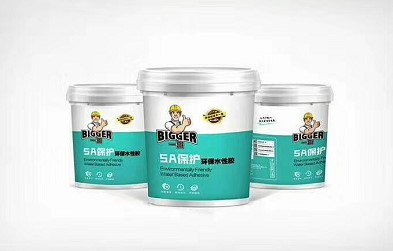Six characteristics of water-based PU glue
Six characteristics of water-based PU glue:
1. Since most water-based PU adhesives do not contain -NCO groups, they mainly rely on intramolecular polar groups to produce cohesion and adhesion for curing. The solvent-based, solvent-free one-component and two-component polyurethane adhesives can make full use of the -NCO reaction to enhance the bonding performance during the bonding curing process. Waterborne polyurethane contains carboxyl, hydroxyl and other groups, which can participate in the reaction under suitable conditions to cause the adhesive to crosslink.
2. Important factors affecting the viscosity of waterborne polyurethane are ionic charge, core-shell structure, emulsion particle size, and polymer thickeners. The more ions and counter ions (referring to free ions with opposite polarity to the ionic groups contained in the polyurethane main chain and side chains in the solution) on the polymer molecule, the greater the viscosity. The solid content (concentration), the molecular weight of the polyurethane resin, the crosslinking agent and other factors have no obvious influence on the viscosity of the waterborne polyurethane, so it is conducive to the high molecular weight of the polyurethane, thereby improving the cohesive strength of the adhesive. In contrast, the main influencing factors of the viscosity of solvent-based polyurethane adhesives are the molecular weight of the polyurethane, the degree of branching, and the concentration of the glue. With the same solid content, the viscosity of water-based adhesives is lower than that of solvent-based adhesives.
3. Viscosity is an important parameter of adhesive performance. The viscosity of waterborne polyurethane is generally adjusted by water-soluble thickener and water. The solvent-based adhesive is adjusted by increasing the solid content, the molecular weight of the polyurethane, or selecting a suitable solvent.

4. Because water is less volatile than organic solvents, the water-based PU glue is relatively dry and slow, and because of the large surface tension of water, it has poor wetting ability to surface hydrophobic substrates. If most of the moisture has not volatilized into the air from the adhesive layer or coating, or if it is heated and dried after being absorbed by the porous substrate, it is difficult to obtain a continuous adhesive layer.
5. Water-based PU glue can be mixed with a variety of water-based resins, which can improve its performance and reduce costs. Relatively speaking, attention should be paid to the ionic nature and acidity of the ionic water-based glue, otherwise it may cause agglomeration. Because of the compatibility between polymers or the solubility in some solvents, solvent-based polyurethane adhesives can only be blended with a limited number of other resin adhesives.
6. The water-based PU adhesive has a low odor, is easy to operate, and the residual adhesive is easy to clean, while the solvent-based polyurethane adhesive not only consumes a large amount of solvent during the use process, but also is not as convenient as water-based adhesive.
